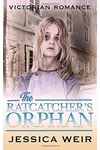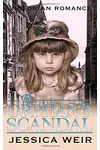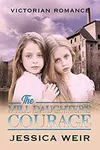Picture a storyteller who spins tales of grit and heart in the smoky streets of Victorian-era England—meet Jessica Weir! This bestselling historical fiction author has a knack for crafting novels that pulse with human triumph, set against the rugged backdrop of Lancashire and London. But there’s more to Weir than her page-turners; her 20-year collaboration with Australian Aboriginal communities infuses her work with a unique lens on societal issues, making her stories resonate with modern readers.
With a day job investigating public sector governance and human-environment relations, Weir blends her academic rigor with a passion for storytelling. Her novels don’t just entertain—they challenge us to reflect on justice, resilience, and the ties that bind us across time. Ready to dive into her world?
The Making of Jessica Weir
Born with a love for Dickens’ gritty tales, Jessica Weir grew up enchanted by stories of hardship and hope. Her fascination with the Victorian era, with its stark contrasts of wealth and struggle, shaped her path as a writer. While details of her early life remain private, her roots in Lancashire and London shine through in her vivid settings. Before becoming a novelist, Weir carved out a career in public sector research, focusing on societal norms and justice—a foundation that grounds her fiction in real-world relevance.
Her 20-year partnership with Australian Aboriginal communities sparked a deep respect for cultural narratives, influencing her approach to storytelling. This blend of scholarly insight and literary passion set the stage for her debut novels, which quickly captured readers’ hearts.
Jessica Weir’s Unforgettable Stories
Weir’s novels are like a time machine to Victorian England, where ordinary people face extraordinary challenges. Her debut, The Orphan in the Blue Satin Dress (2020), follows Violet, an orphan in a brutal workhouse, who risks everything to protect her friend Joe from a cruel administrator. It’s a heart-wrenching tale of courage and loyalty that hooks you from page one.
In The Mill Daughter’s Courage (2020), Weir introduces Daisy, a young woman battling grief and poverty after her twin sister’s death. Daisy’s fight to save her family from destitution is both harrowing and inspiring, showcasing Weir’s talent for crafting resilient heroines. Other works like The Orphan’s Scandal (2020) and The Little Lost Girl (2022, co-authored with Sadie Hope) explore themes of injustice and survival, with richly detailed settings that transport readers to the cobbled streets of 19th-century England.
Weir’s style is immersive, blending meticulous historical research with emotional depth. Her characters—often women and children—navigate societal constraints with defiance, reflecting her interest in justice and human-environment relations. By drawing parallels between Victorian struggles and modern issues, she makes history feel alive and relevant.
Why Jessica Weir Matters
Jessica Weir’s impact lies in her ability to bridge past and present. Her novels aren’t just escapist reads; they’re a call to examine societal norms and resilience through a historical lens. Her collaboration with Aboriginal communities adds a layer of cultural sensitivity, urging readers to consider diverse perspectives on human struggles. Weir’s work has carved a niche in historical fiction, inspiring fans to see history as a mirror to today’s challenges.
Her growing popularity proves that readers crave stories that blend heart, history, and social commentary. As she continues to write, Weir’s legacy as a storyteller who champions the underdog is only set to grow.
- Key Works: The Orphan in the Blue Satin Dress, The Mill Daughter’s Courage, The Orphan’s Scandal, The Little Lost Girl
- Genres: Historical Fiction, Sagas
- Influences: Charles Dickens, Victorian-era history
Snag The Orphan in the Blue Satin Dress and dive into Jessica Weir’s gripping world of Victorian resilience!





